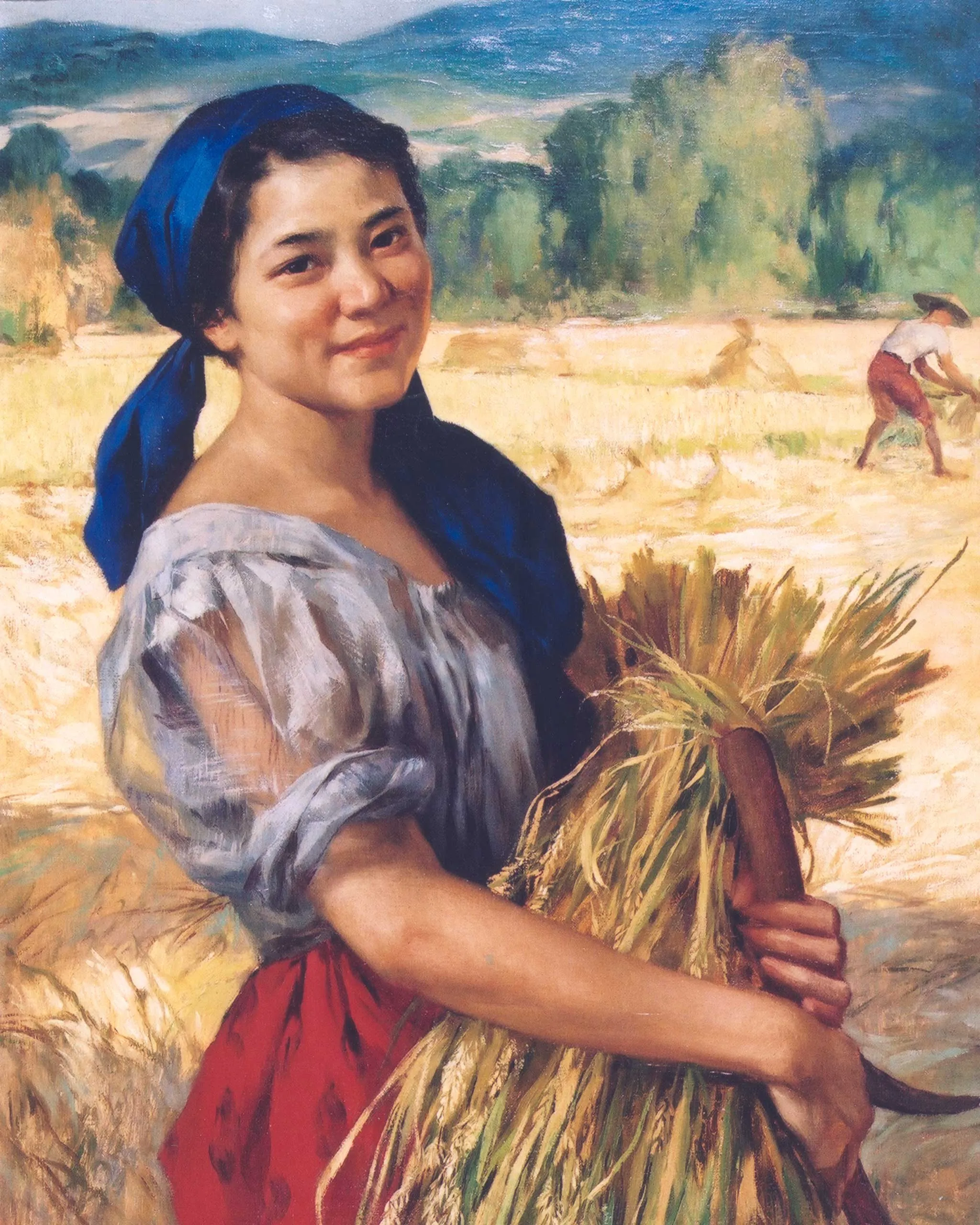“Untitled (maiden with the palay stalks)” (1920), oil on canvas, by Fernando Amorsolo.
With a focus on color and accessibility, the Amorsolo: Chroma exhibition at the Ayala Museum invites viewers to rediscover the works of the country’s first National Artist.
The entrance wall of Amorsolo: Chroma offers a definition of the word chroma, stating:
- The purity of color, or its freedom from white and gray
- Intensity of distinctive hue; saturation of a color
While meant to be a technical introduction to Amorsolo’s masterful use of color, it also provides a lens through which viewers can experience his works. “That’s really intended just as a definition but it does call to mind many parallels,” the exhibition’s curator, Tenten Mina, tells Vogue Philippines. Purity, freedom, intensity, and saturation: all these elements are evident throughout the show, both visually and metaphorically.
Amorsolo’s oeuvre has been showcased many times before at the Ayala Museum, but this is the first time that it centers on the artist as a colorist. “It has always been the subject matter or historical themes in his works that we featured,” says Mina, “so this time we wanted to isolate a key component of his work: and that was color.”
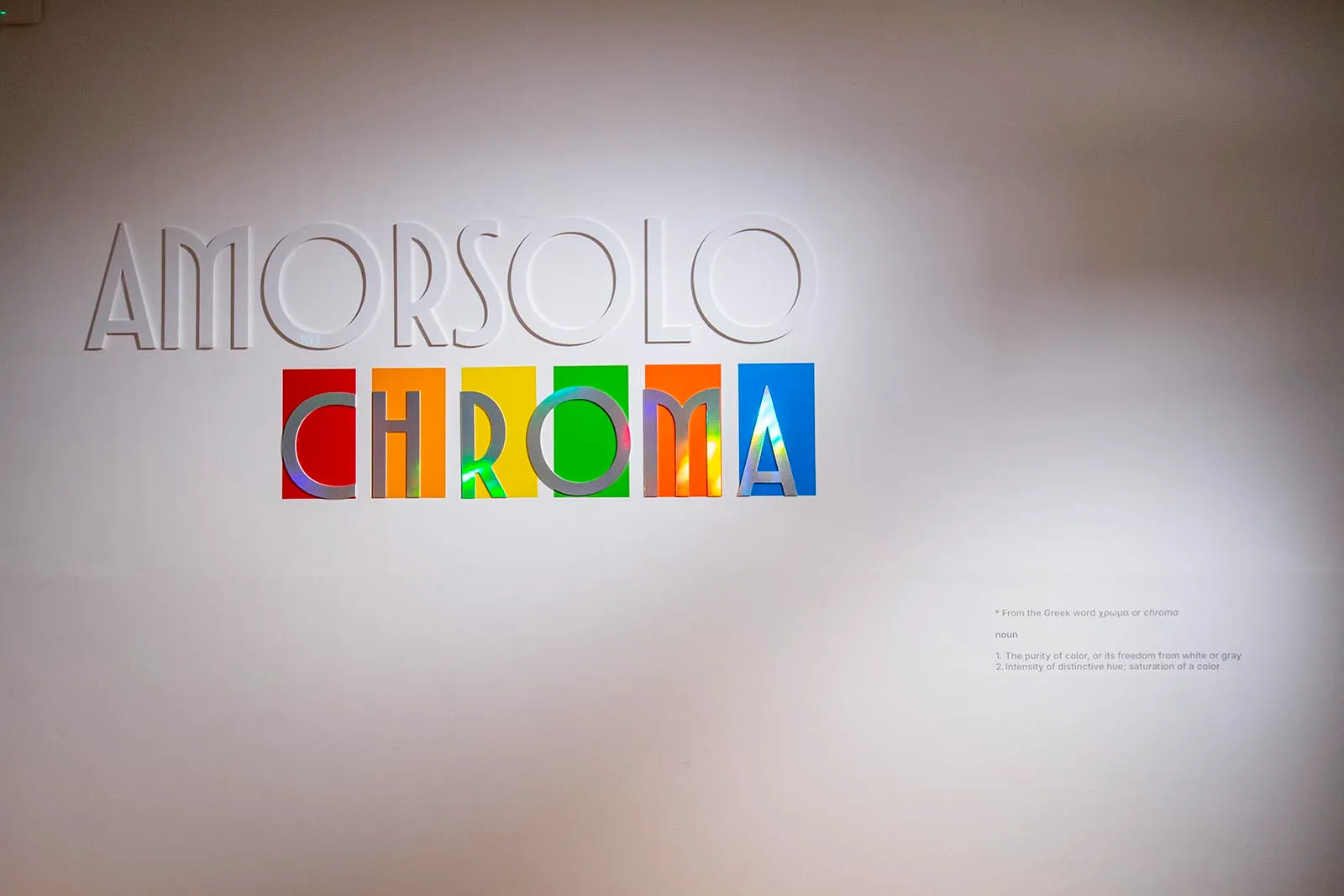
In moving through the galleries, viewers will find familiar Amorsolo works such as intimate portraits, lush landscapes, and idyllic scenes of pastoral Filipino life. Chroma builds on this familiarity, infusing it with an understanding of how Amorsolo used color to capture the spirit of the people and places he depicted. For instance, his choice to dress subjects in colorful traditional attire contributes to the radiance of the figures. In part, we see this through the colored bandanas, which bring individuality to the subjects while also creating harmony between them and their environments. In an untitled portrait of a seated girl, the figure and her warm brown skin are framed by her orange bandana and orange skirt. The yellow highlight from the bandana also echoes in the yellow mangoes on her lap, adding to the harmonious character of the scene. “The bandanas illuminate the figures because if all your figures only had black hair, they wouldn’t pop in your composition,” Mina says. “With this, we see that Amorsolo is truly a masterful craftsman. He understood painting and understood how to make compositions really come alive.”
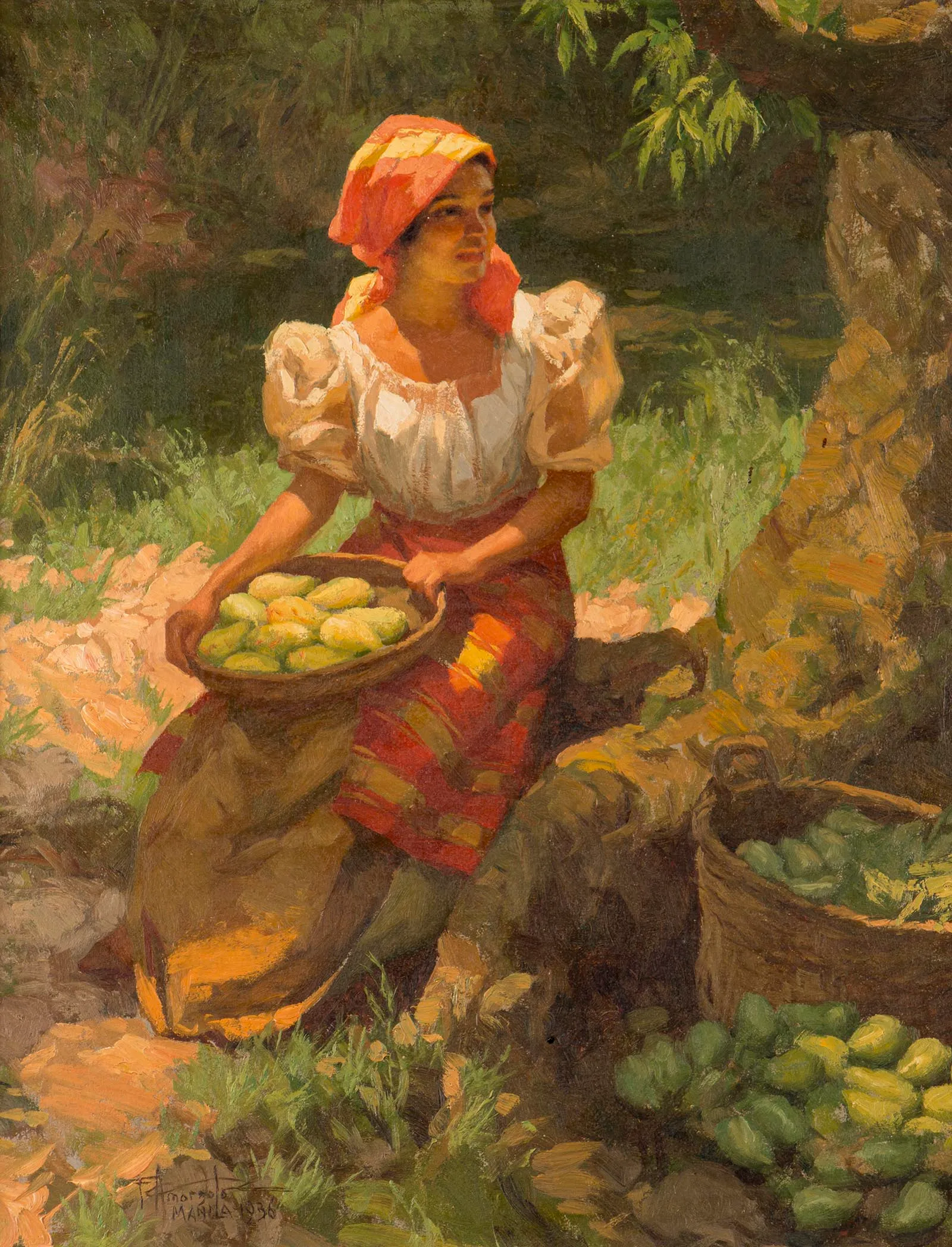
We also see that, for Amorsolo, color was a means of foregrounding Filipino identity. The early 20th century saw Filipinos beginning to shift away from Hispanic influence and more toward a modern, American outlook. Amorsolo, however, chose to convey an imagined purity of the past and brought attention to people and places that did not necessarily fit within newer worldviews. Take, for instance, his portrait of a maiden with palay stalks. Amorsolo depicts this agricultural laborer with dignity while emphasizing her identity as a Filipina. Placed against a yellow rice field and dressed in the colors of the Philippine flag (which was unfurled just a couple decades prior in 1898), she is seemingly free from the constraints of American modernity.
In this exhibition, Amorsolo’s body of work is punctuated by paintings from his influences and contemporaries. This juxtaposition shows not only Amorsolo’s close relationship to the Philippine and Spanish artistic cultures around him, but also that which made the painter unique. Mina explains, “We really want people to be able to observe for themselves what it means when we say that Amorsolo is a Master of Philippine Sunlight, what it means when we say that he is a Poet of Color.”
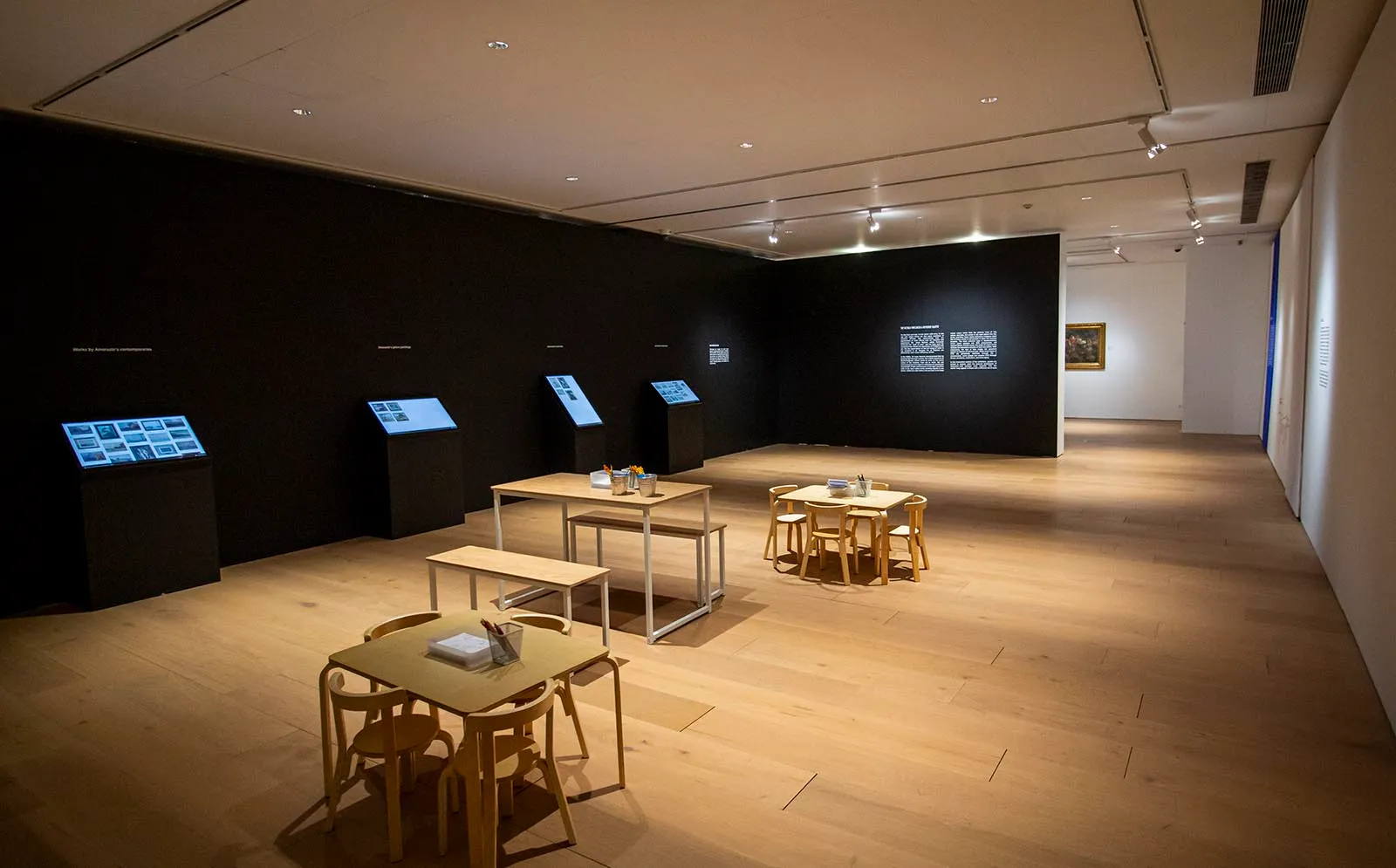
Unlike his contemporaries who often favored more muted palettes, Amorsolo captured the brilliance of the Philippine sunlight that fleetingly traveled across bodies and landscapes. The warm hues also allude to the country’s tropical temperature and intense sunshine, which, in turn, heighten the emotional warmth of his compositions.
At the tailend of the galleries, we see that Chroma’s focus on color goes beyond the canvases. Here, viewers can immediately reflect on their own experiences with Amorsolo’s works through experiential tools such as light tables with translucent colored squares, digital displays with various chromatic filters, and EnChroma ColorBlind Glasses for those with color vision deficiencies (CVD).
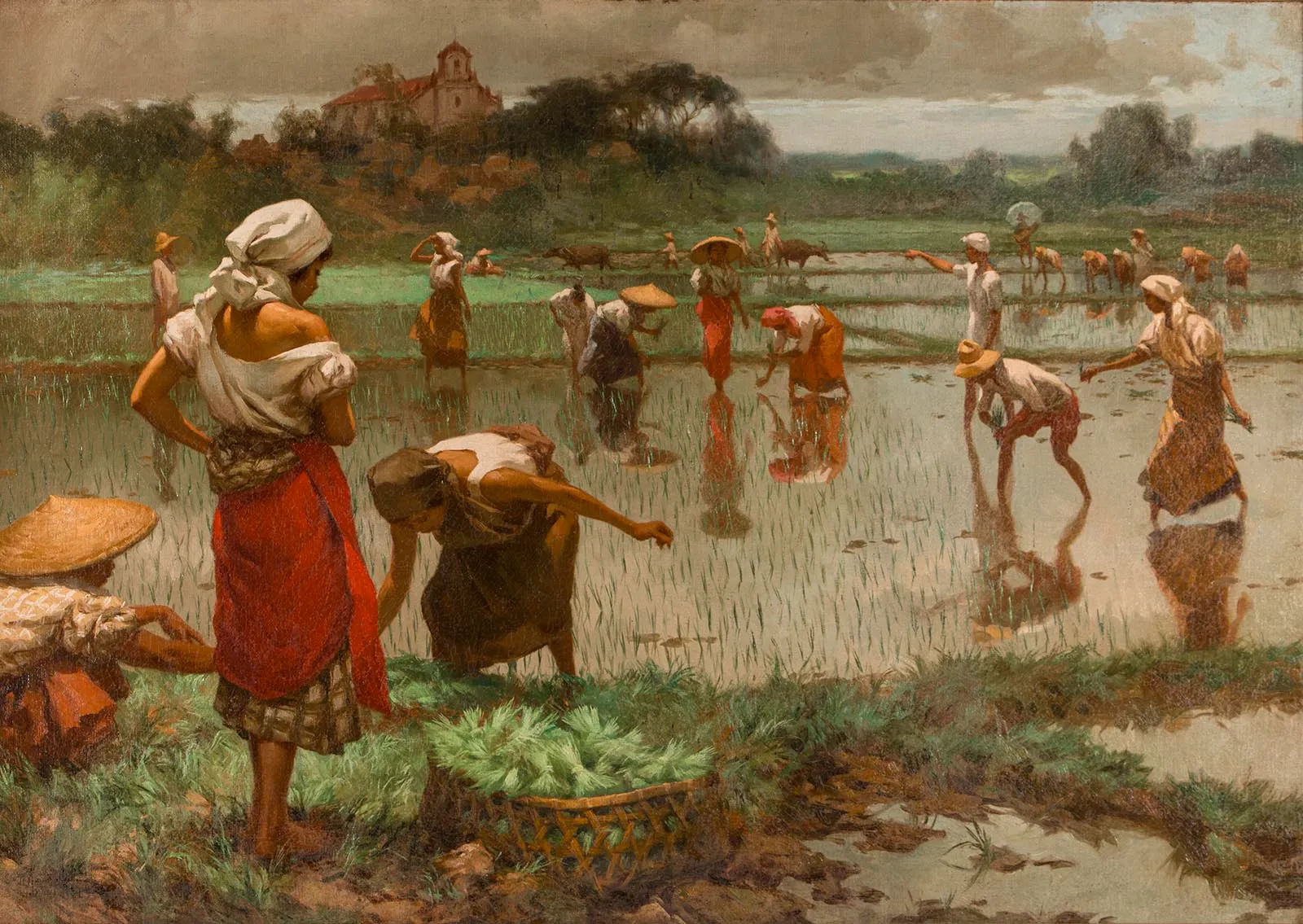
In many museums, accessibility and educational programming are often used to support a curatorial vision. In Chroma, however, they form a core portion of the exhibition. What’s even more interesting is that the idea for this section came from the curator’s interactions with people with CVD and her desire to create for them an accessible space to view art. She explains, “In thinking of the wide-ranging demographics of the museum, there are always opportunities to be more empathetic, to understand another person’s condition, another person’s experience.”
Chroma is truly a visual feast that brings Amorsolo’s palette into dynamic conversation with history, Philippine identity, and modern-day accessibility. It also shows us that if we— for a moment—look at the world through the eyes of another person, we might just see things in a brand new light.
Amorsolo: Chroma runs through September 7 and is available for viewing Tuesdays to Sundays at the Ayala Museum, Greenbelt Park, Makati.
